Bangladesh Flag Meaning
A dark green field with a red circle positioned slightly toward the hoist side, representing the lush Bengali landscape and the sun rising over Bengal, as well as the blood shed during the Liberation War of 1971 and the new dawn of independence.
- Continent
- Asia
- Adopted
- 1972
- Ratio
- 3:5
- Colors
- green, red
- Designer
- Quamrul Hassan
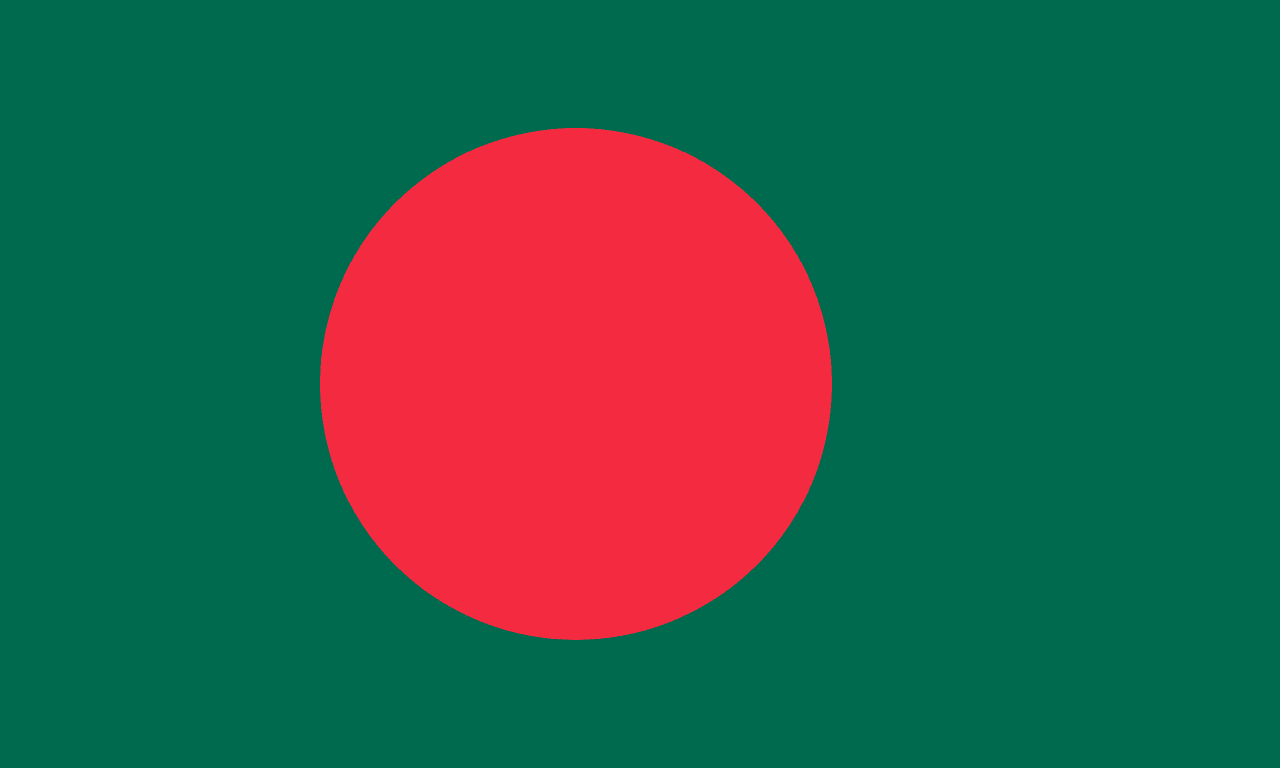
Symbolism
Green Field: Represents the lush green landscape of Bangladesh, including the fertile river deltas, rice fields, and tropical vegetation that characterize the Bengali countryside, as well as the youth and vitality of the nation.
Red Circle: Represents the sun rising over Bengal and the new dawn of independence, while also symbolizing the blood shed by the martyrs during the Liberation War of 1971 who sacrificed their lives for freedom from Pakistani rule.
Circle Position: The red circle is positioned slightly toward the hoist side so that when the flag flies, it appears centered, demonstrating the careful design consideration for the flag's appearance in motion.
Bengali Heritage: The colors reflect the natural beauty of Bengal and the cultural pride of the Bengali people, connecting the flag to the region's rich literary, artistic, and musical traditions that span both Bangladesh and West Bengal.
History
- Ancient-Medieval Period: Bengal flourished as a center of trade, culture, and learning under various dynasties including the Pala, Sena, and Bengal Sultanate, developing a distinct Bengali identity, language, and cultural traditions.
- 1757-1947: British colonial rule began after the Battle of Plassey, with Bengal becoming the jewel of the British Raj, though exploitation led to famines and the growth of independence movements led by figures like Subhas Chandra Bose.
- August 14, 1947: The partition of British India created East Bengal as East Pakistan, separating Bengali Muslims from West Bengal's Hindus, causing massive population displacement and communal violence.
- 1948-1971: Cultural and economic discrimination by West Pakistan led to growing Bengali nationalism, with the Language Movement of 1952 defending Bengali language rights and laying the foundation for independence.
- March 26, 1971: Sheikh Mujibur Rahman declared independence following Operation Searchlight, Pakistan's military crackdown that began the Liberation War and led to widespread atrocities and genocide.
- December 16, 1971: Bangladesh achieved independence after nine months of war with Pakistani forces surrendering in Dhaka, ending a conflict that killed an estimated 3 million people and displaced 10 million.
- January 17, 1972: The current flag was officially adopted, replacing the map of Bangladesh that had appeared in the original independence flag with a simple red circle on green field.
- 1975: Sheikh Mujib and most of his family were assassinated in a military coup, beginning a period of political instability and military rule that lasted until the restoration of democracy.
- 1990-1991: Mass uprising ended military rule under General Ershad, leading to the restoration of parliamentary democracy and the beginning of competitive politics between major parties.
- 2009-Present: Sheikh Hasina, daughter of Sheikh Mujib, has led Bangladesh through significant economic growth and development, though concerns about democratic backsliding and human rights have increased.
Trivia
- Bangladesh is the world's eighth most populous country despite being only slightly larger than Greece, making it one of the most densely populated nations on Earth.
- The flag represents a country built on the fertile Ganges-Brahmaputra delta, which creates some of the world's most productive agricultural land but also makes it extremely vulnerable to flooding.
- Bangladesh is the world's largest exporter of ready-made garments, with the textile industry employing over 4 million people, mostly women, and driving economic development.
- The country experiences one of the world's most dramatic monsoon seasons, with about 80% of annual rainfall occurring between June and October, shaping all aspects of life.
- Bengali is spoken by about 300 million people worldwide, making it the world's seventh most spoken language, with a rich literary tradition including Nobel laureate Rabindranath Tagore.
- The flag flies over a country that is extremely vulnerable to climate change, with rising sea levels threatening to displace millions of people from coastal areas and islands.
- Bangladesh has made remarkable progress in reducing child mortality and increasing life expectancy, achieving many Millennium Development Goals despite being a low-income country.
- The country is famous for its river system, with over 700 rivers including three major ones (Ganges, Brahmaputra, Meghna) that create the world's largest delta system.
- Traditional Bengali cuisine features rice and fish as staples, with hilsa fish being considered the national fish and an important cultural symbol in Bengali identity.
- Bangladesh is home to the world's largest mangrove forest, the Sundarbans, which is a UNESCO World Heritage site and the last stronghold of the Bengal tiger.
- The flag represents a country where microcredit was pioneered by Muhammad Yunus and Grameen Bank, revolutionizing financial services for the poor and earning a Nobel Peace Prize.
- Traditional arts including weaving, pottery, and boat-making remain important, with the colorful rickshaws serving as mobile art galleries showcasing Bengali folk art traditions.
- Bangladesh has achieved remarkable success in disaster preparedness and cyclone early warning systems, dramatically reducing death tolls from natural disasters.
- The country has a young population with over 60% under age 30, creating both opportunities for economic growth and challenges for job creation and education.
- Despite challenges with corruption and poverty, Bangladesh has maintained a vibrant democracy with regular elections and peaceful transfers of power between major political parties.
Related Countries
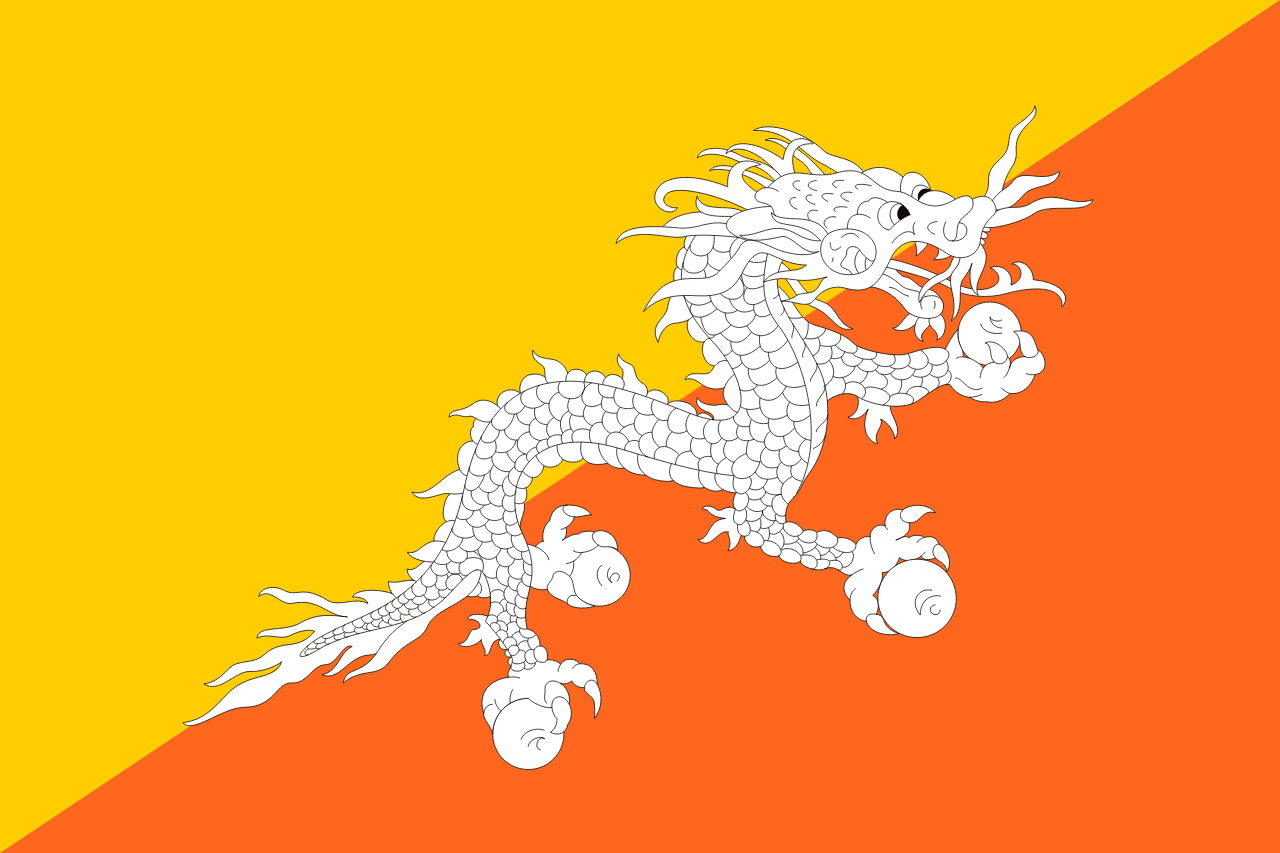
Bhutan
Asia
Divided diagonally with orange in the upper triangle and yellow in the lower triangle, featuring a white dragon (Druk) in the center holding jewels in its claws, representing the spiritual and temporal power of Bhutan and the Thunder Dragon that gives the country its name 'Land of the Thunder Dragon.'
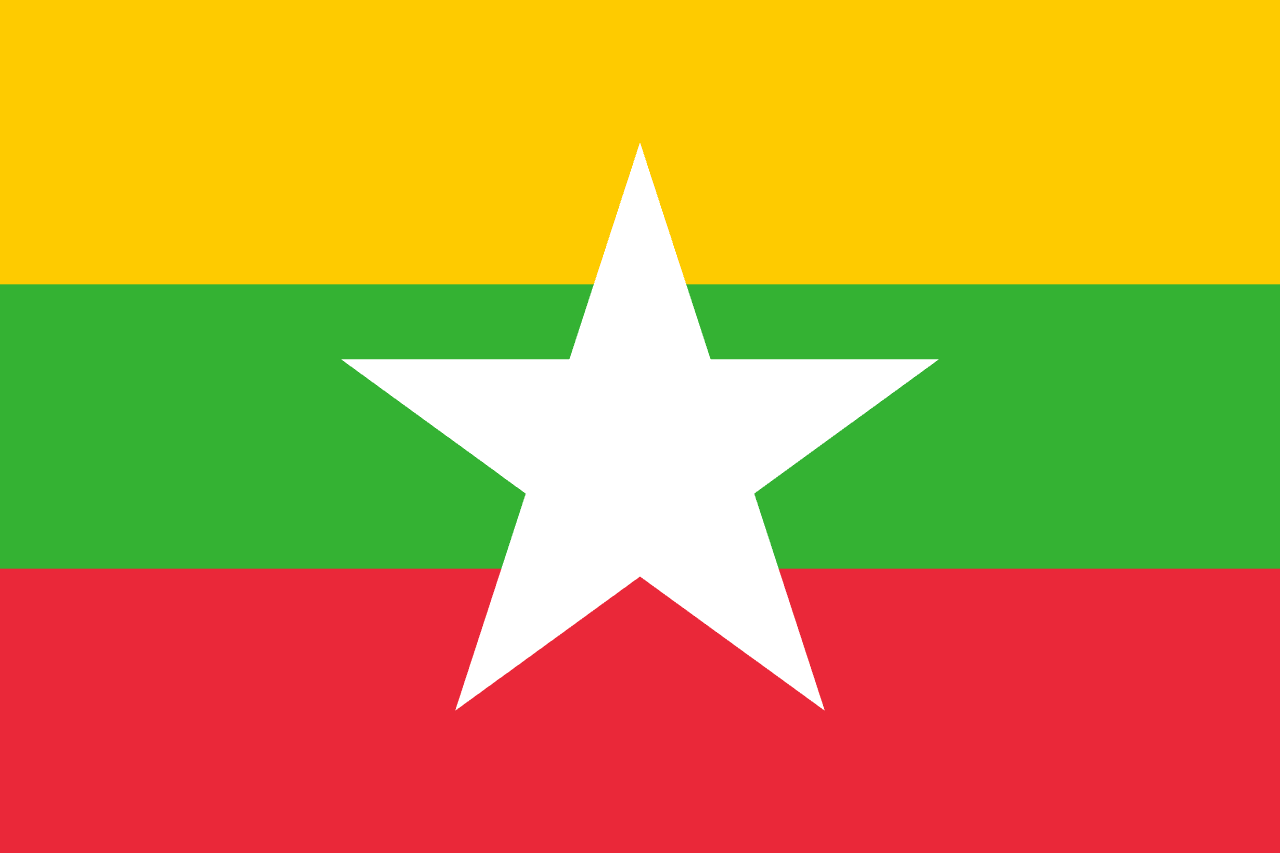
Myanmar
Asia
A horizontal tricolor of yellow, green, and red with a large white five-pointed star in the center. Adopted in 2010, the flag symbolizes unity and a new era for Myanmar.
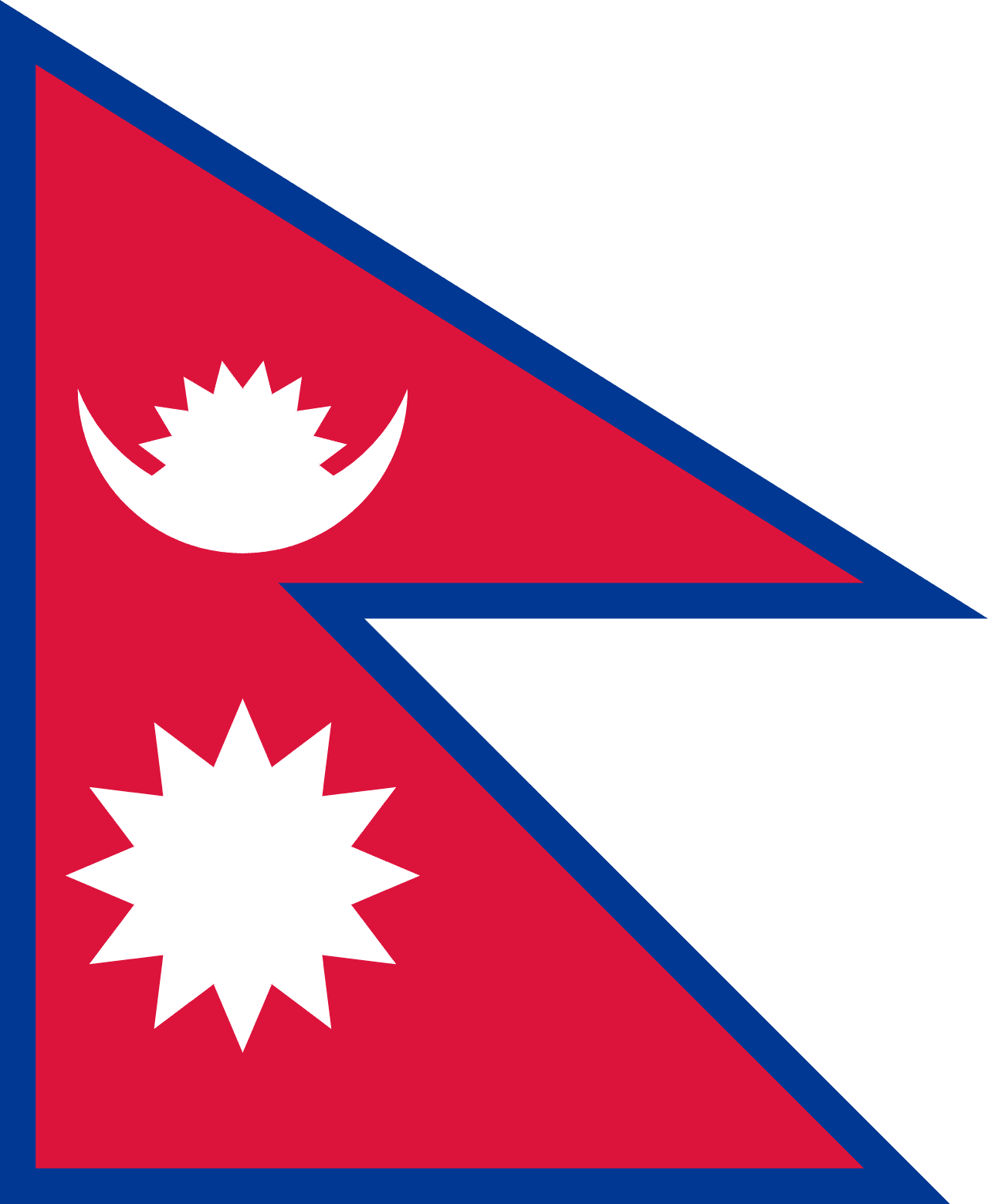
Nepal
Asia
The only national flag that is non-rectangular, composed of two stacked crimson pennons with blue borders, featuring a white moon and a white sun. It reflects Nepal’s distinct identity, culture, and Hindu-Buddhist traditions.

India
Asia
Three horizontal stripes of saffron, white, and green with a navy blue Ashoka Chakra (24-spoke wheel) in the center, representing courage and sacrifice, peace and truth, faith and fertility, and the eternal wheel of law in Indian philosophy.
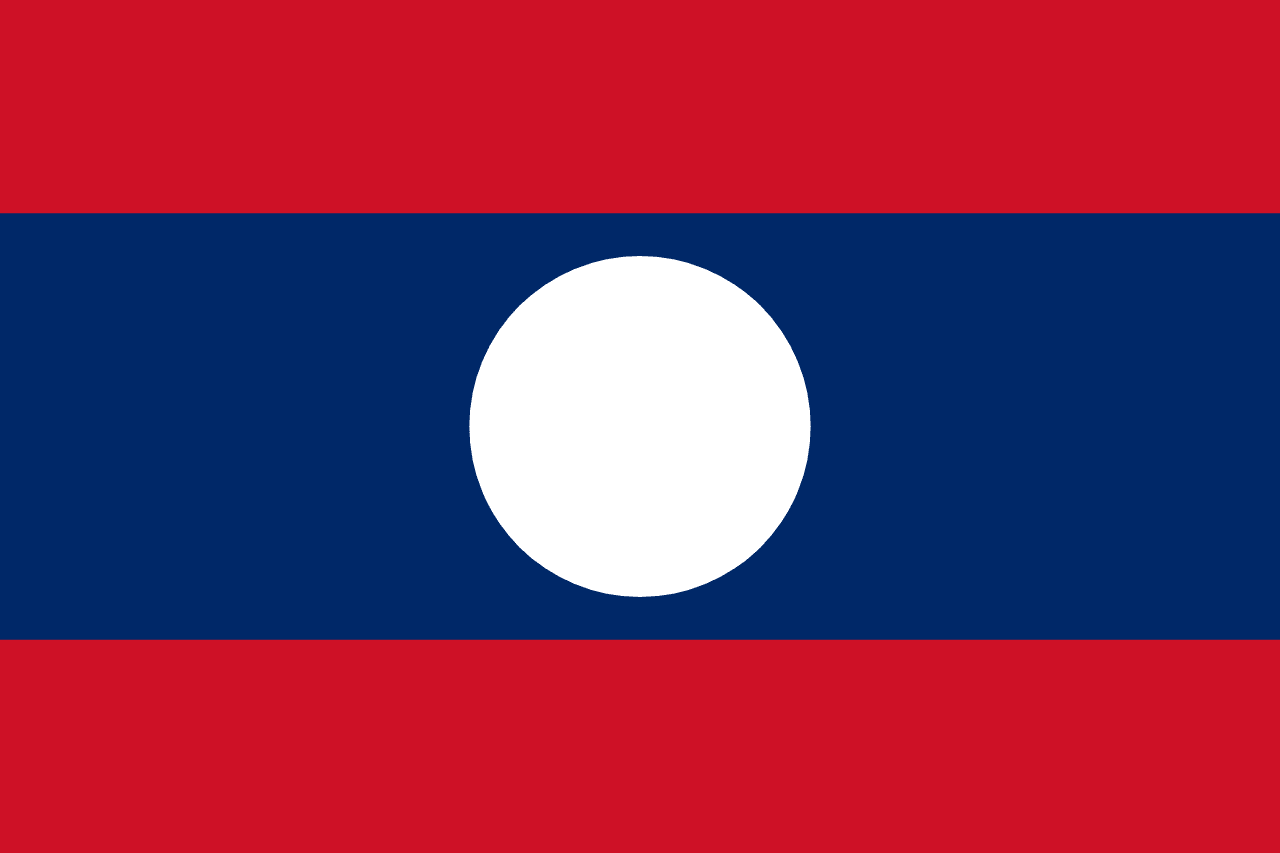
Laos
Asia
Three horizontal stripes of red, blue, and red with a white circle centered on the blue stripe, representing the blood of independence, the Mekong River, and the full moon reflecting unity of the Lao people.

Thailand
Asia
Five horizontal stripes with red at top and bottom, white in the second and fourth positions, and blue in the center, representing the nation and the people, the purity of Buddhism, and the monarchy, designed by King Rama VI during World War I to show solidarity with the Allies.